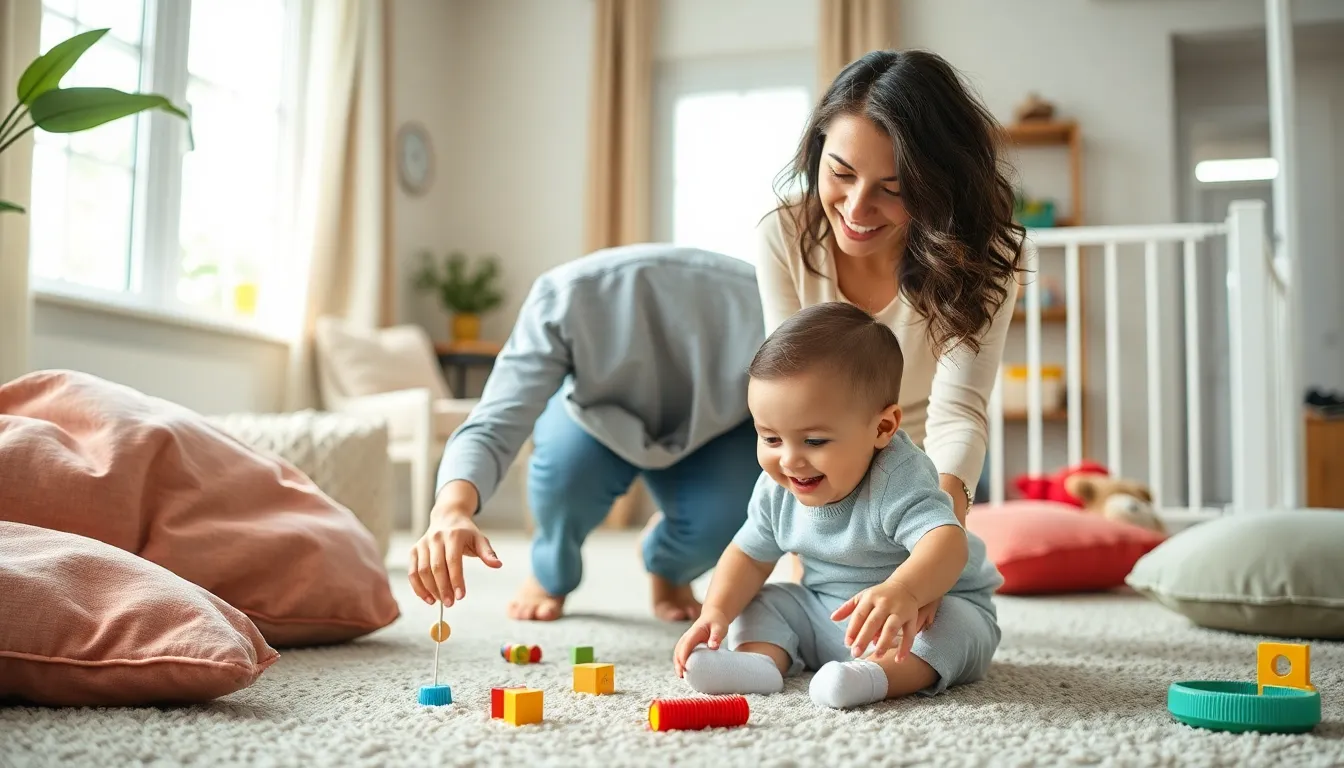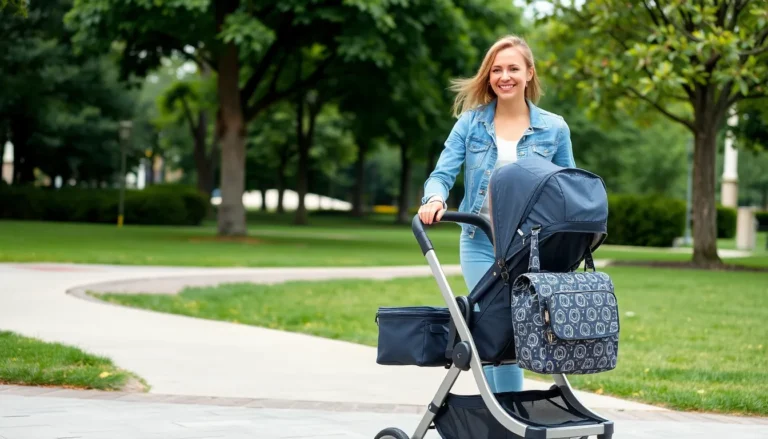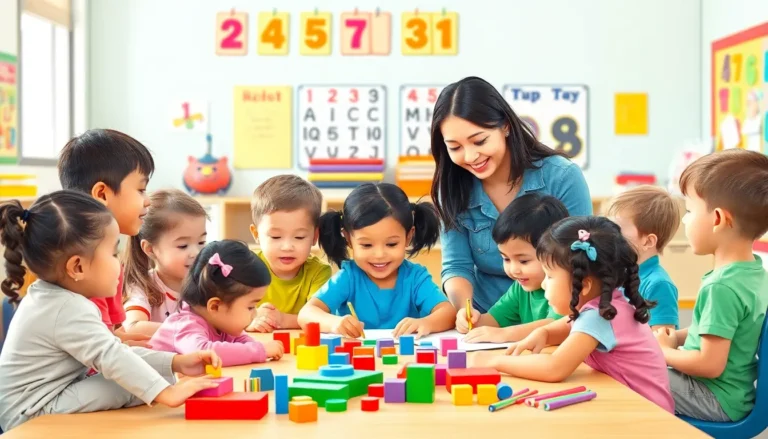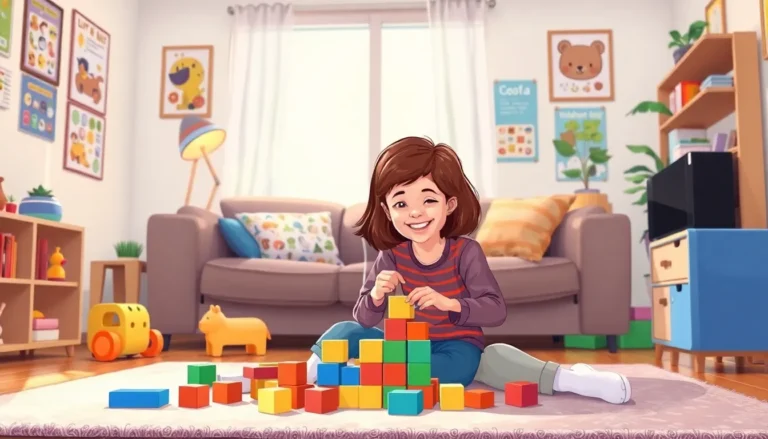Table of Contents
ToggleBringing a baby into the home is a joyous occasion, but it also comes with a new set of challenges. The world can be a dangerous place for little explorers, and ensuring their safety is a top priority for any parent. Babyproofing isn’t just about adding a few safety gates; it’s about creating a secure environment where children can grow and discover without constant worry.
From sharp corners to toxic substances, hazards lurk in every corner of the home. It’s essential to identify potential dangers and take proactive steps to minimize risks. By implementing effective babyproofing strategies, parents can transform their living spaces into safe havens, allowing their little ones to thrive while keeping peace of mind.
Understanding Babyproofing Your Home
Babyproofing ensures a safe environment for children to explore. It involves addressing potential dangers while allowing for growth and development.
Importance of Babyproofing
Babyproofing plays a crucial role in preventing accidents and injuries. It fosters an environment where children can safely explore their surroundings. According to the American Academy of Pediatrics, most unintentional injuries in infants occur in the home, making proactive measures essential. Each year, thousands of young children visit emergency rooms due to preventable incidents. By implementing babyproofing techniques, caregivers significantly reduce these risks, promoting a healthier and safer space for play and discovery.
Common Hazards in the Home
Common hazards in the home can pose serious risks to infants and toddlers. Key hazards include:
- Sharp corners: Furniture such as coffee tables or countertops can cause injuries.
- Toxic substances: Cleaning supplies, medications, and chemicals should be stored out of reach.
- Electrical outlets: Unattended outlets can lead to electric shocks; safety covers should be used.
- Choking hazards: Small items, including coins and small toys, must be kept away from young children.
- Falls: Stairs and elevated surfaces require safety gates and secure items to prevent falls.
- Strangulation risks: Cords from blinds or electrical devices can pose strangulation dangers.
Identifying and addressing these hazards helps create a safer living environment for children, allowing them to thrive without unnecessary risk.
Essential Babyproofing Products
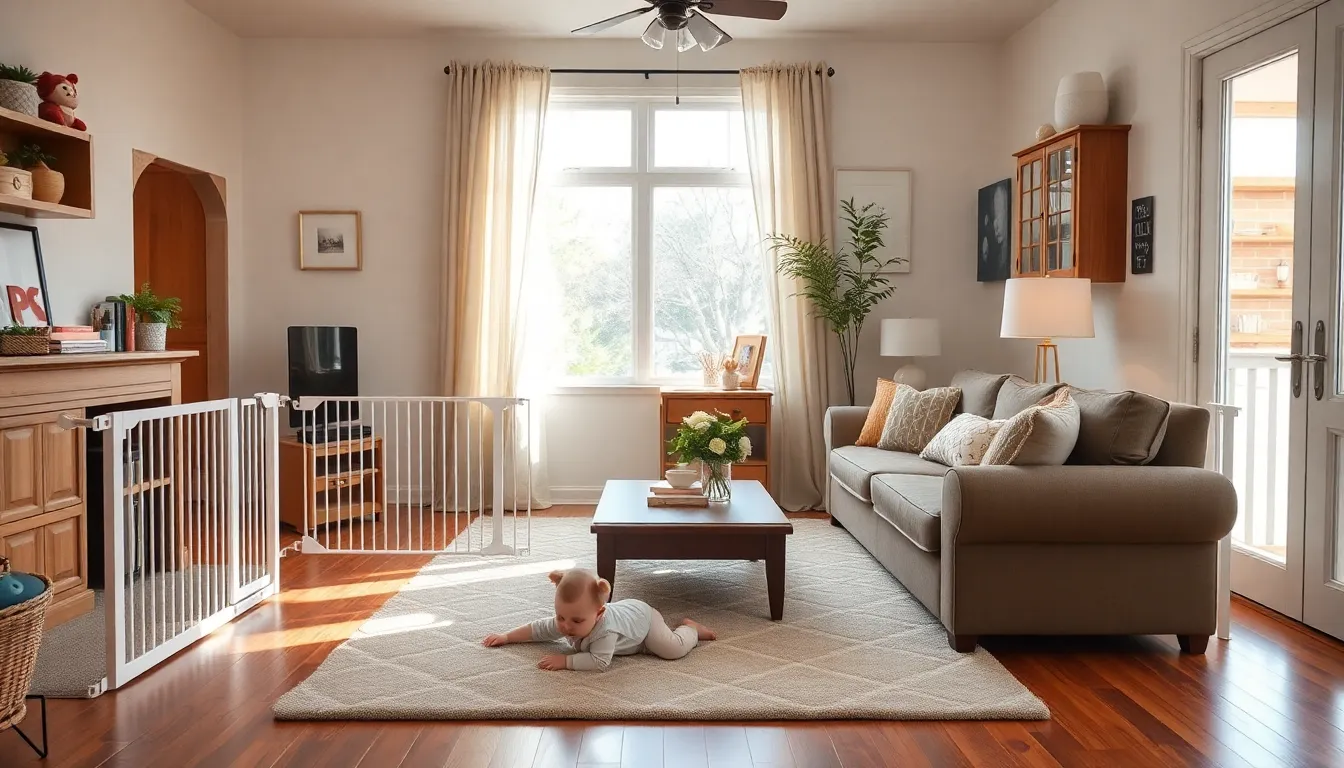
Babyproofing products play a vital role in creating a safe environment for infants. The right tools reduce hazards while allowing children to explore comfortably.
Safety Gates and Barriers
Safety gates and barriers serve critical functions. They block access to staircases, restrict entry to unsafe areas, and protect children from potential falls. Look for gates that meet safety standards, such as those from the American Society for Testing and Materials (ASTM). Expandable fabric or pressure-mounted gates provide versatility, while hardware-mounted versions offer more stability. Check for features like one-handed operation and non-toxic materials to ensure convenience and safety.
Corner Protectors and Bumpers
Corner protectors and bumpers safeguard against sharp edges. Soft, cushioned products fit snugly over furniture corners, reducing injury risks during falls. Choose corner protectors with strong adhesive backing for secure attachment. Many options are transparent, providing functionality without compromising aesthetics. Consider using bumpers on low furniture, such as coffee tables or low shelves, where children may frequently move.
Cabinet Locks and Latches
Cabinet locks and latches restrict unauthorized access to dangerous areas. Installing these devices on kitchen cabinets, drawers, and bathroom storage prevents curious toddlers from exploring harmful items. Magnetic locks offer a childproof mechanism that only adults can operate with a special key. Alternatively, sliding locks provide straightforward installation and ease of use. Ensure the locks are durable and easy to set up for immediate peace of mind.
Room-by-Room Babyproofing Guide
Creating a safe environment for a baby requires attention to detail in every room. Below is a guide focused on specific areas of the home to ensure safety and minimize risks.
Living Room and Common Areas
- Furniture Placement: Arrange furniture to prevent climbing and create barriers around sharp edges.
- Secure Heavy Items: Fasten bookcases and heavy appliances to walls to prevent tipping.
- Electrical Outlets: Install outlet covers or safety plates to block access to live wires.
- Rugs and Cords: Remove or secure rugs to avoid tripping hazards; manage cords from electronics to keep them out of reach.
- Small Objects: Regularly check for toys or items on the floor that can pose choking risks.
Kitchen Safety Tips
- Cabinet Locks: Use childproof latches on cabinets containing sharp utensils and cleaning supplies.
- Stove Safety: Implement stove knob covers to prevent accidental turning on of burners.
- Countertop Storage: Store knives and hazardous items at the back of countertops, out of reach of small hands.
- Appliance Safety: Keep heavy appliances unplugged or out of reach when not in use to avoid accidents.
- Hot Surfaces: Monitor cooking to ensure hot surfaces and pots are inaccessible to curious infants.
Bedroom Safety Considerations
- Crib Setup: Ensure the crib meets safety standards, with a firm mattress and no loose bedding or toys.
- Nightstand Placement: Keep nightstands and shelves free of items that can fall and injure a child.
- Window Guards: Install window locks or guards to prevent falls as windows can be enticing for toddlers.
- Dresser Stability: Secure dressers to walls to avoid tipping, particularly when children try to climb.
- Cord Management: Tie or secure cords from blinds or curtains to prevent strangulation hazards.
Bathroom Precautions
- Non-Slip Mats: Place non-slip mats in and outside the tub to minimize slip risks during bath time.
- Toilet Locks: Install toilet locks to prevent drowning risks for curious toddlers.
- Storage Solutions: Keep medications and cleaning products in high cabinets with locks to avoid exposure to toxins.
- Temperature Control: Set water heater temperatures to below 120°F to prevent burns.
- Supervision: Always supervise infants and young children during bath time to ensure safety.
Evaluating and Monitoring Safety
Ensuring a child’s safety requires ongoing vigilance and regular assessments of the home environment. Parents should consistently evaluate various areas of the house to maintain a secure setting for their little ones.
Regular Safety Checks
Conducting regular safety checks helps identify new hazards as a child grows and explores. Parents should:
- Inspect furniture stability, ensuring heavy items are anchored securely.
- Assess the condition of safety gates and locks, verifying functionality.
- Review children’s access to hazardous items like cleaning supplies, tools, and medications.
- Check for loose cords from electrical devices that could pose choking threats or trip hazards.
- Monitor toys for wear or breakage, replacing any that have become unsafe.
Establishing a routine for these safety checks can prevent accidents and injuries.
Involving Family Members
Involving family members in safety discussions fosters a communal responsibility for the child’s well-being. Families can:
- Share safety information and guidelines with caregivers, ensuring everyone is informed.
- Assign specific tasks related to safety checks, encouraging collaboration.
- Discuss the importance of adhering to babyproofing measures consistently.
- Educate older siblings about safeguarding practices, promoting their role in protecting their younger siblings.
Encouraging open dialogue among family members enhances awareness and vigilance, creating a safer home environment.
Babyproofing is essential for creating a safe haven for little ones. By identifying and addressing potential hazards parents can ensure their children explore their environment with confidence. Implementing effective babyproofing measures not only prevents accidents but also fosters a sense of security for the entire family.
Regular safety checks and ongoing vigilance are key as children grow and their curiosity expands. Encouraging open discussions about safety among family members strengthens the commitment to a secure living space. With a proactive approach to babyproofing parents can enjoy peace of mind while nurturing their child’s development in a safe environment.

